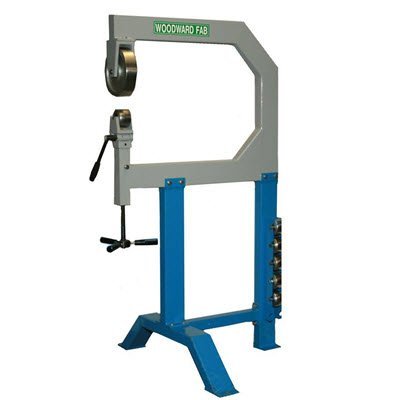Sheet metal fabrication and ironwork may sound synonymous or interchangeable terms, but they are not. Each of this requires a unique skill set, materials, and equipment. The similarity is that both of these are metal fabrication techniques and comprise a variety of metals and machinery. Fabricating a metal implies cutting, bending, rolling, deburring, sawing, or more to give it a certain shape and size and use it in assembling a component. So, it is more functional in nature. Ironwork includes making railings, bridges, bank vaults, and other constructions of iron. Hence, this is more structural in nature. Be it sheet metal fabrication or ironwork, right kind of tools and equipment are essential to add precision and increase speed and efficiency. So, what are the other differences in sheet metal fabrication and ironwork? Let’s find out.

Know About Sheet Metal Fabrication and Types of Tools Used
Sheet metal fabrication primarily involves the use of sheet metals to build or fabricate metal structures, electronic goods, automotive parts, and more. These metals generally include aluminum, stainless steel, zinc, copper, and certain alloys. A sheet metal fabricator requires various tools and equipment for specific tasks such as cutting, bending, welding, and pressing. The following are a few sheet metal fabrication equipment regularly used:
- Metal Cutting Saws: These tools include band saws, chop saws, cold saws, and circular saws.
- Deburring and Beveling Tools: These include sanders, grinders, bevel mills, and more. These have powerful motors and enable a vibration-free operation. They are mostly lightweight, yet robust.
- Pressing Tools: There is an entire range of presses that includes shop, bench mounted, hydraulic drill, and electric hydraulic drill presses.
- Pipe & Tube Fabrication: The fabrication of tubes and pipes is one of the processes that demands high precision. Thus, this process is completed using pipe and tube benders, rollers, and notchers. There is a huge range in these tools from hand pipe benders to hydraulic notchers. You need to choose your product depending on the level of finishing you require.
- Sheet Metal Rolling Equipment: Slip rollers and ring rollers are few of the commonly used rolling equipment to bend and roll metal sheets. Some of these are manual, while others work on power.
- Sheet Metal Bending: A metal sheet is bent and stretched in particular dimensions to form certain shapes. The tools for this process include sheet metal brakes, benders, and 3-in-1 machines. These are cutting edge tools made of cast iron as these tasks require high precision. It is important to wear safety gear when using these tools.
- Welding: In this process, two pieces are joined together using a molten material. Welding equipment comprises a table, plasma cutting machine, weld positioners, clamps, shavers, and a helmet as a safety gear. All of these tools make the welding process efficient.
- Iron Workers and Punching: These are useful for professional fabricators as well as hobbyists. These include the manually-operated punching kits and iron workers.
- Hand Tools: No matter how much we advance in terms of automation, some hand tools would always remain essential and convenient. There are high-quality tools available designed ergonomically. These include hammers, mallets, dollies, and slappers.
An Introduction to Ironwork and Different Types of Ironwork Tools
Typically, ironworkers dabble in wrought iron; however, ironworks now involve the use of other non-ferrous metals as well. Most of these involve heavy duty projects. Ironworkers can be categorized into three types based on the type of work or project.
- Structural Ironworkers: The term structural implies something to do with construction. So, these tasks mainly involve constructing frameworks of iron that are used in building bridges, buildings, vaults, loading and unloading equipment, and more.
- Ornamental Ironworkers: This involves constructing metal frames for stairways, roofs, window frames, railing, fencing, gates and others.
- Reinforcing Ironworkers: This involves reinforcing iron rods for strengthening slabs, pillars, footing structures, and buildings. These are also called rodbusters.
Some of the commonly used ironworker tools include pliers, bull pins, tool tethers, bolt bags, friction tapes, connecting bars, clamps, and so on.
Fab shops, workshops, and the manufacturing sector in general have changed remarkably over the last few years with the advent of technology. The incorporation of technology into the core engineering sector has changed the work processes altogether be it for ironwork or sheet metal fabrication. However, some basic manually-operated tools required for sheet metal fabrication and ironwork will always be in demand. Using high-quality tools is important to ensure the appropriateness of an ironworking sheet metal fabrication project. Woodward Fab is one of the leading suppliers and manufacturers of high-quality sheet metal fabrication tools.
